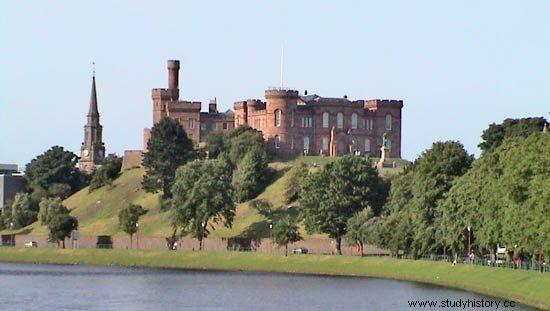Inverness-Shire , also Called Inverness , historic county Northern Scotland . It is Scotland's largest historic county and includes part of central Highlands , Glen Mor , and part of the Highlands to the north. It also includes multiple islands of inner and Outer Hebrides , like Skye , Harris (part of Lewis and Harris ), North Uist , Benbecula , South Uist , Barra and the islets. Those of the Outer Hebrides (Harris, the Uisten, Benbecula and Barra) are part of the The Municipality of the Western Isles and the rest of the county (including the Inner Hebrides and the entire mainland area) are in the municipality of Highlands .

Cairns, stone circles and brooches (drywall towers) are evidence of prehistoric occupation in the county. When the area entered the historical record in Roman times, it was home to the Picten . Inverness was the capital of the Picts under King Brude as St. Columba arrived via ad 565 to promote Christianity. When Scotland was unified in the following centuries, Inverness-shire was part of the province of Moray. The county came under the control of a number of landowners Dynasties medieval, including the MacIntoshes, the Frasers, the Chisholms, and the Grants. Along the Atlantic coast, the MacDonalds, Camerons and MacLeods were subject to the Lords of the Isles. During the 15th and 16th centuries use the Stuart- However, kings used the influence of chiefs in the growing clan system to assert control of Inverness-shire.
In the 17th and 18th centuries, the county's clans participated in the religious and political controversies surrounding the English Civil Wars and the riots the Jacobites different sides and internecine dispute rocked Inverness-shire. The British government built Forts George, Augustus and William and a system of military roads in the county in the late 17th and early 18th centuries, um area pacification to facilitate . The government reduced the power of the chiefs and opened the way for outsiders to acquire much of the country. These landlords forcibly evicted thousands of crofters to create large sheep farms during the "Upland Clearances" of the early 19th century. There was a large-scale emigration to the USA Scottish Lowlands and to Canada, the United States, and Australia. Widespread popular sympathy for the crofters in Scotland brought protective legislation later in the century, but economic difficulties meant crofters and other country dwellers were still living well into the 20th century in urban areas migrated. The development of tourism and the exploitation of North Sea Oil during the 20th century, however, brought renewed economic vitality to parts of Inverness-shire.
